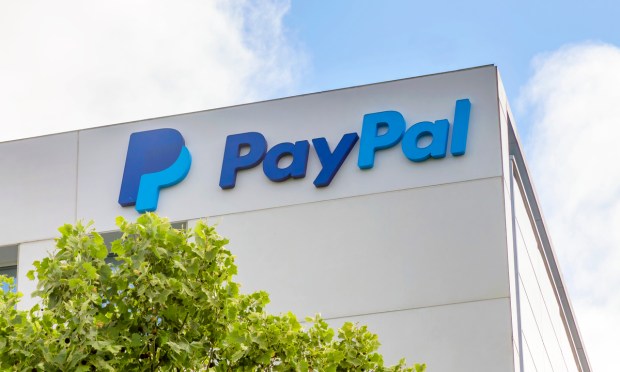PayPal’s New CEO: Data, AI, Scale Bring Merchants and Consumers Together in ‘Tight Flywheel’

In his first quarterly earnings conference call as PayPal’s new CEO, Alex Chriss laid out for investors and analysts a number of initiatives aimed at gaining “ubiquity both online and in person.”
Those efforts, he detailed on the call, will focus on leveraging what he termed “the data, the scale and the brand” to bring — with the help of artificial intelligence (AI) — “merchants and consumers together in a tight flywheel.”
And as he said later in the call: “Harnessing an end-to-end data platform will help us drive network effects throughout our business.”
Drilling down into the third quarter results, PayPal’s transactions per active account grew by double digits year over year (YoY), boosted by strong customer spending, and peer-to-peer (P2P) transactions now represent 25% of total payment volumes.
PayPal detailed in its earnings materials that total payments volume grew by 13% on a foreign exchange-neutral basis to $388 billion.
The company logged 11% growth in transactions, to 6.3 billion. The firm said that transactions per active account grew by 13% YoY to 56.6, while P2P total payments volume (TPV) was up 4% YoY to $97 billion. Venmo TPV was up 7% to $58 billion.
The company ended the third quarter with 428 million active accounts, down 0.9% YoY, and down 0.6% from the previous quarter, which reflected churn of “minimally engaged accounts,” PayPal’s materials showed.
Cross-border trade TPV was 12% of the overall tally, growing 4% on an FX-neutral basis. Cross-border trade is largely tied to eCommerce spending on goods.
Chriss said that over 70% of adults in the U.S. have used PayPal in the past five years, adding that “with the recent launch of our Venmo Team account, we are now seeing adoption of our core products and services across the entire addressable market in the U.S.”
Rewards and Passkeys
He said that more than 25 million consumers have used PayPal Rewards in the past 12 months.
Chriss said, “We have an active database of over 300 million SKUs of inventory from our merchant partners. These data points can help us use AI to power a robust shopping recommendation engine to provide more relevant rewards and savings back to our customers.”
The company has rolled out passkeys to more than 10 million consumers globally to “reduce friction in the sign-in experience.”
Later in the call, he remarked, “When we look at the data that we have across this two-sided network, it allows us to do things that others just can’t,” including personalizing branded checkout along with the ability to “recognize people at checkout with our data and create an experience that is frictionless.” Branded checkout TPV, the company detailed, was up 6%.
With a nod to efforts aimed at small businesses, he said, “The core customer problem we can solve is helping them get more customers,” and added that the PayPal complete payment solution has helped drive checkout by enabling SMBs to offer a broad range of payment options.
Package Tracking, he added, is now live with more than 5,000 merchants, and early results show an 80% decrease in item-not-received disputes, 40% higher dispute wins and 65% faster funds release.
In detailing scale, Chriss said that, through the last 12 months, PayPal processed more than $450 billion in volume out of an estimated $4 trillion to $5 trillion of global large enterprise eCommerce volume — about 10% of the total.
Acting CFO Gabrielle Rabinovitch (who will be succeeded by Jamie Miller in the CFO role next week) said on the call that the slight decline in active accounts came as PayPal sought to “flush out low quality customers predominantly in Latin America and Southeast Asia. As a reminder, we said this would be a year where we churn off lower quality actives and in which total accounts would decline. Year to date, churn has been lower than our expectations.”
She guided to fourth quarter revenue growth of between 7% to 8%. Investors bid the shares up 3% in after hours trading on Wednesday.

